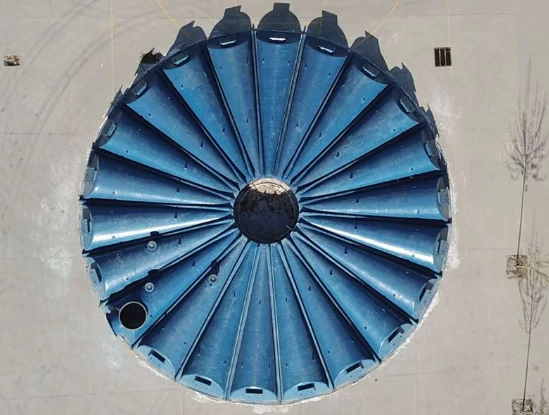
-
 Afrikaans
Afrikaans -
 Albanian
Albanian -
 Amharic
Amharic -
 Arabic
Arabic -
 Armenian
Armenian -
 Azerbaijani
Azerbaijani -
 Basque
Basque -
 Belarusian
Belarusian -
 Bengali
Bengali -
 Bosnian
Bosnian -
 Bulgarian
Bulgarian -
 Catalan
Catalan -
 Cebuano
Cebuano -
 China
China -
 China (Taiwan)
China (Taiwan) -
 Corsican
Corsican -
 Croatian
Croatian -
 Czech
Czech -
 Danish
Danish -
 Dutch
Dutch -
 English
English -
 Esperanto
Esperanto -
 Estonian
Estonian -
 Finnish
Finnish -
 French
French -
 Frisian
Frisian -
 Galician
Galician -
 Georgian
Georgian -
 German
German -
 Greek
Greek -
 Gujarati
Gujarati -
 Haitian Creole
Haitian Creole -
 hausa
hausa -
 hawaiian
hawaiian -
 Hebrew
Hebrew -
 Hindi
Hindi -
 Miao
Miao -
 Hungarian
Hungarian -
 Icelandic
Icelandic -
 igbo
igbo -
 Indonesian
Indonesian -
 irish
irish -
 Italian
Italian -
 Japanese
Japanese -
 Javanese
Javanese -
 Kannada
Kannada -
 kazakh
kazakh -
 Khmer
Khmer -
 Rwandese
Rwandese -
 Korean
Korean -
 Kurdish
Kurdish -
 Kyrgyz
Kyrgyz -
 Lao
Lao -
 Latin
Latin -
 Latvian
Latvian -
 Lithuanian
Lithuanian -
 Luxembourgish
Luxembourgish -
 Macedonian
Macedonian -
 Malgashi
Malgashi -
 Malay
Malay -
 Malayalam
Malayalam -
 Maltese
Maltese -
 Maori
Maori -
 Marathi
Marathi -
 Mongolian
Mongolian -
 Myanmar
Myanmar -
 Nepali
Nepali -
 Norwegian
Norwegian -
 Norwegian
Norwegian -
 Occitan
Occitan -
 Pashto
Pashto -
 Persian
Persian -
 Polish
Polish -
 Portuguese
Portuguese -
 Punjabi
Punjabi -
 Romanian
Romanian -
 Russian
Russian -
 Samoan
Samoan -
 Scottish Gaelic
Scottish Gaelic -
 Serbian
Serbian -
 Sesotho
Sesotho -
 Shona
Shona -
 Sindhi
Sindhi -
 Sinhala
Sinhala -
 Slovak
Slovak -
 Slovenian
Slovenian -
 Somali
Somali -
 Spanish
Spanish -
 Sundanese
Sundanese -
 Swahili
Swahili -
 Swedish
Swedish -
 Tagalog
Tagalog -
 Tajik
Tajik -
 Tamil
Tamil -
 Tatar
Tatar -
 Telugu
Telugu -
 Thai
Thai -
 Turkish
Turkish -
 Turkmen
Turkmen -
 Ukrainian
Ukrainian -
 Urdu
Urdu -
 Uighur
Uighur -
 Uzbek
Uzbek -
 Vietnamese
Vietnamese -
 Welsh
Welsh -
 Bantu
Bantu -
 Yiddish
Yiddish -
 Yoruba
Yoruba -
 Zulu
Zulu
Products for Steel Smelting Plant Focusing on GRP Solutions and Innovations
The Role of GRP Products in Steel Smelting Plants
Steel smelting plants are critical components of the steel production process, transforming raw materials into molten steel through intense heat and chemical reactions. The efficiency and effectiveness of these plants are heavily reliant on advanced materials and technologies. One such innovation is the use of Glass Reinforced Plastic (GRP) products, which have become increasingly important in enhancing the operational capabilities of steel smelting facilities.
Understanding GRP
Glass Reinforced Plastic (GRP), commonly known as fiberglass, is a composite material made of a polymer matrix reinforced with glass fibers. This combination results in a lightweight, strong, and durable material that is resistant to corrosion and thermal shock—making it exceptionally suitable for the demanding environments typical in steel smelting.
Advantages of GRP in Steel Smelting
1. Corrosion Resistance One of the most significant advantages of GRP products is their resistance to corrosion. In steel smelting plants, equipment is exposed to harsh chemicals and extreme temperatures. Traditional materials, such as steel or iron, often succumb to corrosion over time, leading to maintenance concerns and increased replacement costs. GRP's superior resistance ensures longevity and reduces the need for frequent maintenance.
2. Weight Efficiency The lightweight nature of GRP materials contributes to energy savings during the transportation and installation process. Weighing significantly less than metal counterparts, GRP products can ease the load on supporting structures and reduce installation complexity. This aspect is particularly beneficial in retrofitting existing plants with new technologies.
3. Thermal Insulation GRP exhibits excellent thermal insulation properties, which are crucial in maintaining the temperature within the smelting process. Effective thermal insulation minimizes heat loss, ensuring higher efficiency during the smelting operation. This not only reduces energy consumption but also enhances the overall productivity of the plant.
grp products for steel smelting plant

4. Ease of Design and Customization GRP is highly versatile, allowing for a wide range of designs and shapes. This flexibility makes it an ideal choice for various applications within a steel smelting plant, including tanks, ducting, and structural components. Customization capabilities ensure that GRP products can be engineered to meet specific operational requirements, further enhancing plant efficiency.
5. Resistance to High Temperatures The smelting process operates at extremely high temperatures, often exceeding 1600°C (2912°F). GRP products have been developed to withstand these elevated temperatures without degrading. Specialized formulations of GRP can endure the heat of the smelting environment while maintaining structural integrity and functionality.
Applications of GRP in Steel Smelting Plants
In steel smelting plants, GRP products find applications in various areas
- Storage Tanks GRP tanks are used for storing corrosive chemicals or by-products of the smelting process, minimizing the risk of leaks and spills. - Piping Systems GRP piping systems ensure efficient conveyance of liquids and gases while resisting corrosion and thermal stresses. - Ventilation Ducts GRP ducting solutions promote effective air circulation, essential for controlling temperatures within the plant. - Structural Supports GRP structural components provide strong and reliable support for various installations, from equipment to walkways, without the weight concerns associated with metal.
Conclusion
The incorporation of GRP products in steel smelting plants represents a significant advancement in material science, providing essential solutions to address the challenges of corrosion, weight, thermal management, and design flexibility. As the steel industry continues to evolve, embracing innovative materials like GRP will be crucial for optimizing production efficiency, reducing downtime, and ultimately enhancing profitability. With their numerous advantages, GRP products are poised to play a pivotal role in the future of steel smelting operations worldwide.









